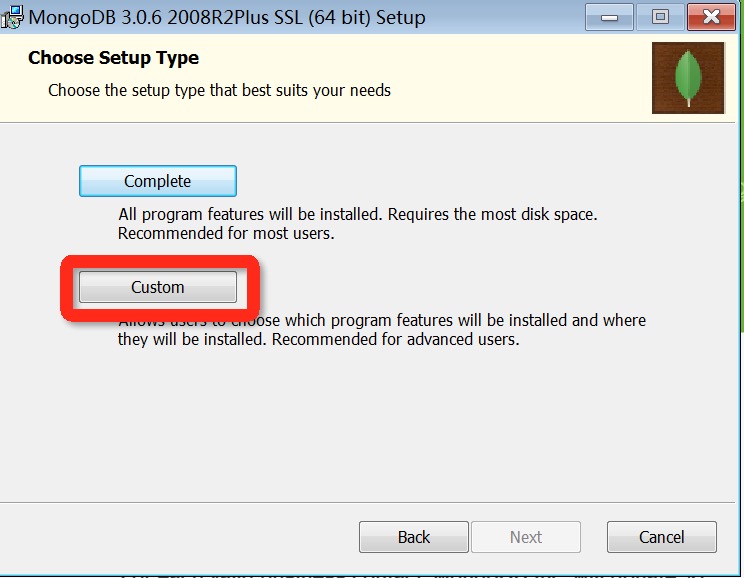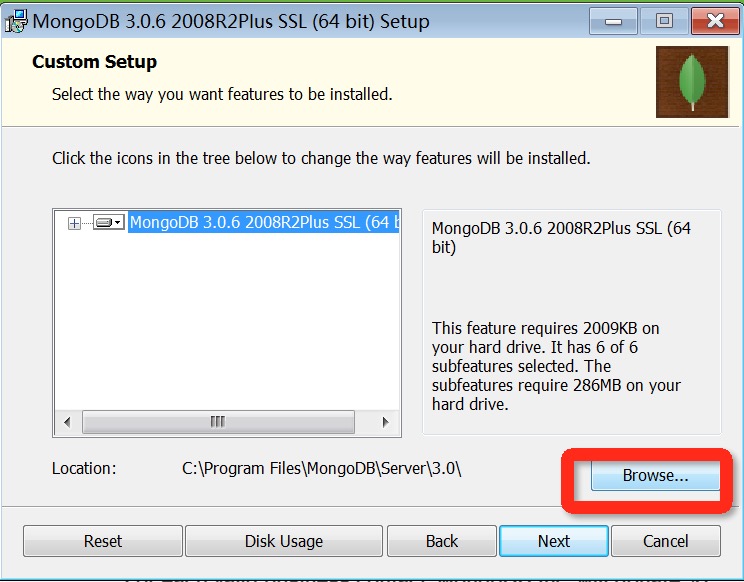MongoDB安装
本文共 703 字,大约阅读时间需要 2 分钟。
下载
MongoDB的官网是:
可以在官网下载,但是我试了一下特别麻烦,所有找了一个简单的方法,可以在这个地址直接下载zip,安装
安装过程中,你可以通过点击 "Custom(自定义)" 按钮来设置你的安装目录。


1.随意创建自己喜欢的路径,D:\code\environment\MongoDB //这是我的路径
2.然后在C:\或者D:\下,新建data文件夹D:\data //我的安装在D盘所以在D盘新建data文件夹
注意(MongoDB将数据目录存储在 db 目录下。但是这个数据目录不会主动创建,我们在安装完成后需要创建它。请注意,数据目录应该放在根目录下((如: C:\ 或者 D:\ 等 ))
3.然后在data文件夹下面分别建立db,log两个文件夹(用来存MongoDB数据和日志)
在log文件夹下创建一个日志文件MongoDB.log,即D:\data\log\MongoDB.log
4.操作:
双击bin下的mongod.exe (注意是d,这个是启动程序) 成功如下图测试数据库操作
>help (查看相关信息)>db.foo.insert({a:1}) (往foo表插入a,1字段值,foo表为默认表)>db.foo.find() (查看foo表数据) 用浏览器打开
看到
说明安装成功了It looks like you are trying to access MongoDB over HTTP on the native driver port.
你可能感兴趣的文章
Nginx多域名,多证书,多服务配置,实用版
查看>>
nginx如何实现图片防盗链
查看>>
Nginx学习总结(11)——提高Nginx服务器的安全性,稳定性和性能的12种技巧
查看>>
Nginx学习总结(12)——Nginx各项配置总结
查看>>
Nginx学习总结(13)——Nginx 重要知识点回顾
查看>>
Nginx学习总结(14)——Nginx配置参数详细说明与整理
查看>>
Nginx学习总结(15)—— 提升 Web 应用性能的十个步骤
查看>>
Nginx学习总结(8)——Nginx服务器详解
查看>>
nginx学习笔记002---Nginx代理配置_案例1_实现了对前端代码的方向代理_并且配置了后端api接口的访问地址
查看>>
nginx学习笔记003---Nginx代理配置_注意,在Windows中路径要用/
查看>>
Nginx学习笔记(一) Nginx架构
查看>>
Nginx安装SSL模块 nginx: the “ssl” parameter requires ngx_http_ssl_module in /usr/local/nginx/conf/nginx
查看>>
nginx安装stream模块配置tcp/udp端口转发
查看>>
nginx安装Stream模块配置tcp/udp端口转发
查看>>
Nginx安装与常见命令
查看>>
nginx安装与配置
查看>>
【Flink】Flink 2023 Flink 到 Doris 实时写入实践
查看>>
Nginx安装及配置详解
查看>>
nginx安装并配置实现端口转发
查看>>
nginx安装配置
查看>>


